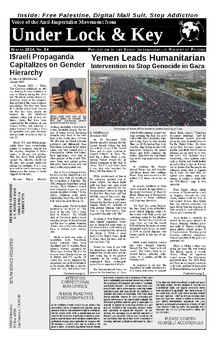
Temporary Alliances from History
There are some good examples of united fronts between oppressed and reactionary groups in the history of the United $tates. Some of which ended up serving the interests of the oppressed and some which ultimately hurt the oppressed. We find a few of these examples described well in the book 500 Years of Indigenous Resistance available from PM Press.(1)
First the case of the fight between the British and the emerging United $tates of Amerika.
"In 1812, using the pretext of Native raids along its northern frontier from British territories, U.S. forces attempted to invade British North America. Here again, Britain's colonial policies proved effective; an alliance of Native nations (who had their own interests in full implementation of the 1763 Proclamation [which prohibited settlement west of the Appalachian mountains following the French and Indian War]) and European settlers succeeded in repulsing the U.S. expansion."(p. 29)
As we have seen since 1812, the victory of the United $tates in the Revolutionary War did not serve the interests of the First Nations. So the First Nations definitely chose the right side in this battle, even though the British surely had no real interest in supporting the rights of the First Nations beyond what was necessary to gain their support. This is an example of identifying the principal enemy and building alliances against that enemy, even if those alliances are with groups that would be enemies in other circumstances. This united front is similar to the alliance between the Kuomindang and the Chinese Communists in the war against Japanese imperialism. Ultimately the Kuomindang betrayed the Communist Party, but at the time Japan was the principal enemy and fighting together in a the united front was the right choice to achieve the ultimate goal of establishing a socialist state.
Another example is found in the U.$. Civil War, which was used by Afrikan slaves to fight for their freedom. It was not a case of whites going to war to help end slavery, but Afrikans were in a position to force this issue to the forefront.
"The beginning of the U.S. Civil War in 1861 posed various problems for the northern Union ruling class. Not only was the war for the preservation of an expanding continental empire, but it also opened up a second front: that of a liberation struggle by enslaved Afrikan peoples. With a population of four million, the rising of these Afrikans in the South proved crucial in the defeat of the Confederacy. By the tens of thousands Afrikan slaves escaped from the slavers and enlisted in the Union forces. This massive withdrawal of slave-labour hit the Southern economy hard, and the Northern forces were bolstered by the thousands."(2)
In the aftermath of the Civil War, Afrikans in the South correctly identified a shift in their principal enemy. It was no longer time to ally with Union forces. With the ending of the war these slaves were about to lose their bargaining position as fighters in the Union army.
"Towards the end of the War in 1865, those Afrikans who did not escape began a large-scale strike following the defeat of the confederacy. They claimed the lands that they had laboured on, and began arming themselves – not only against the Southern planters but also against the Union army. Widespread concerns about this 'dangerous position' of Afrikans in the South led to 'Black Reconstruction'; Afrikans were promised democracy, human rights, self-government and popular ownership of the land. In reality, it was a strategy for returning Euro-American dominance...."(p. 40)
This shift resulted in a better deal for former slaves than they would have got by just passively sticking with their unity with the North. But it shows the need to complete the New Afrikan war for liberation from the United $tates to achieve the basic goals of the Afrikan soliders who freed themselves from slavery. Different conditions will require reevaluation of who is our principal enemy and what are appropriate united front strategies at the time.








